 The many electrical factors related to brain function bolsters the theory that mind might consist of electromagnetic fields, gradients and currents (one of several theories). Posts have described how in the developing fetus electrical synapses lay out the detailed brain structure with chemical synapses built on this template. Other posts have shown how brain regions used synchronous waves for communication at the same time neuron’s action potential communicates through a wired current.
The many electrical factors related to brain function bolsters the theory that mind might consist of electromagnetic fields, gradients and currents (one of several theories). Posts have described how in the developing fetus electrical synapses lay out the detailed brain structure with chemical synapses built on this template. Other posts have shown how brain regions used synchronous waves for communication at the same time neuron’s action potential communicates through a wired current.
Now, recent research shows that DNA functions as an electrical wire in a complex circuit. Critical enzymes that repair DNA have an electrical mechanism involving clusters of iron and sulfur. These metallic clusters allow proteins that are part of the genetic and epigenetic complexes to move electrons. These same clusters operate in many other biological processes including photosynthesis and mitochondrial energy production. Since this research is just beginning, other electric mechanisms could be involved in the complex function of DNA. Do these electrical properties allow DNA networks to respond instantly to mind? How important are these newly discovered electrical properties of DNA and are they related to a theory that electromagnetic forces connect mind, matter and brain? What is the relation of electric DNA and mind?
Many Forms of Brain Electricity
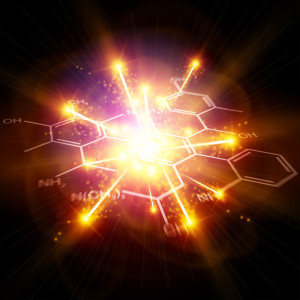 Several previous posts describe the many ways that electricity is involved in brain function. Just as matter and energy can’t be separated, there is no way to separate electrical and chemical synapses. They are critical for each other’s function. Flow of electricity through widespread electrical synapses produces the intricate wiring diagram of the fetal brain. This same process is used to repair neurons by first creating an electrical current and then re building the axon along it. A previous post described how electrical synapses are critical for the ordinary functioning of chemical synapses and vice versa. Many other electric events occur at the level of the protein ion channels sitting in the cell’s membrane and the voltage gated receptors. The sum of all of these effects is called the electrical gradient that has its own effects.
Several previous posts describe the many ways that electricity is involved in brain function. Just as matter and energy can’t be separated, there is no way to separate electrical and chemical synapses. They are critical for each other’s function. Flow of electricity through widespread electrical synapses produces the intricate wiring diagram of the fetal brain. This same process is used to repair neurons by first creating an electrical current and then re building the axon along it. A previous post described how electrical synapses are critical for the ordinary functioning of chemical synapses and vice versa. Many other electric events occur at the level of the protein ion channels sitting in the cell’s membrane and the voltage gated receptors. The sum of all of these effects is called the electrical gradient that has its own effects.
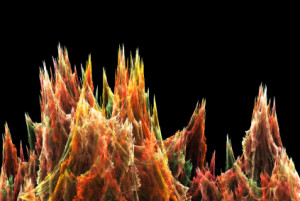 Synchronous electrical brain waves are formed when a group of neurons oscillate with the same frequencies. Two brain regions use beta waves to communicate the color of a memory, while two different regions at the same time oscillate beta waves to communicate the spatial orientation. These regions are sharing information in the form of electrical brain waves, while the neuronal axons share electrical information in the form of wiring triggering chemical synapses. Previous posts describe many other ways that brain waves communicate (see Neuronal Networks & Brain Waves). Gamma waves trigger different brain regions to fire neurons and to oscillate. Background electricity can affect individual neurons to spike.
Synchronous electrical brain waves are formed when a group of neurons oscillate with the same frequencies. Two brain regions use beta waves to communicate the color of a memory, while two different regions at the same time oscillate beta waves to communicate the spatial orientation. These regions are sharing information in the form of electrical brain waves, while the neuronal axons share electrical information in the form of wiring triggering chemical synapses. Previous posts describe many other ways that brain waves communicate (see Neuronal Networks & Brain Waves). Gamma waves trigger different brain regions to fire neurons and to oscillate. Background electricity can affect individual neurons to spike.
In any region of the brain the many different types of electricity form a gradient of voltage potential and an electrical field. Additive electrical flow occurs near parallel columns of neurons. The folded cortical gyri create different electrical fields. Inhibitory neurons have gradients related to the cell body and the dendrites. Some regions of he brain such as the hippocampus have more of the faster electrical synapses to help neuroplasticity. The many properties of these gradients have been described in previous posts. One important function of the gradient is forming morphogen information fields that determine the shape of bodily organs and limbs. (see post Electrical Fields Guiding 3D Shape of Cells and Organs). After neuronal injury, electrical synapses appear and hold neuronal structures together while repair occurs in the chemical wiring synapses.
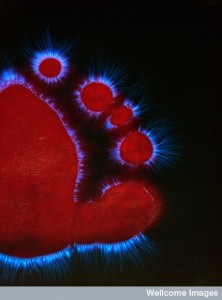 The morphogen field includes all the ways that cells communicate including electricity, molecules in the intracellular space, nanotubes and secreted chemical signals. They form an information field of geometry that allow the three dimensional development of organs and limbs. Please see previous post for a discussion of how this affects the creation of cancer and organs. Cancers form their own new organs with their own community electrical phenomena.
The morphogen field includes all the ways that cells communicate including electricity, molecules in the intracellular space, nanotubes and secreted chemical signals. They form an information field of geometry that allow the three dimensional development of organs and limbs. Please see previous post for a discussion of how this affects the creation of cancer and organs. Cancers form their own new organs with their own community electrical phenomena.
Not only neuronal axon spikes and brain waves correlate with mental states. Now, it has been seen that inter cellular electrical gradients are correlated with mental states. Clearly different types of thought correlate with groups of neurons communicating with synchronous brain waves.
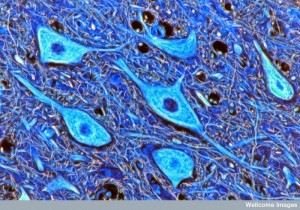 Is mind in nature a form of electromagnetic information source that interacts constantly with molecules, including DNA? Cells demonstrate specific behaviors, which are influenced by the electrical fields. Their behavior is produced by the stimulation of genetic networks. All of the levels are influenced by these electrical events—the networks of cells, the individual cellular behavior and signaling and the genetic and epigenetic mechanisms. For movement of cells, when electrical and chemical gradients are in competition, the electrical gradient wins. The genetic networks are very critical in electric signaling because cells use protein ion channels imbedded in the membranes. These proteins affect distant actions and are very involved in creating the overall gradients. These are all regulated by genetic networks. Now, it is found that DNA itself has fundamental electric signaling properties and that the basic mechanisms that regulate DNA are based on electricity.
Is mind in nature a form of electromagnetic information source that interacts constantly with molecules, including DNA? Cells demonstrate specific behaviors, which are influenced by the electrical fields. Their behavior is produced by the stimulation of genetic networks. All of the levels are influenced by these electrical events—the networks of cells, the individual cellular behavior and signaling and the genetic and epigenetic mechanisms. For movement of cells, when electrical and chemical gradients are in competition, the electrical gradient wins. The genetic networks are very critical in electric signaling because cells use protein ion channels imbedded in the membranes. These proteins affect distant actions and are very involved in creating the overall gradients. These are all regulated by genetic networks. Now, it is found that DNA itself has fundamental electric signaling properties and that the basic mechanisms that regulate DNA are based on electricity.
DNA Damage and Electricity
 DNA is assaulted all day by photons from the sun and chemicals in the cell’s environment, often causing damage. Copying DNA billions of times per day, also, produces errors. Previous posts have described some of the many ways that cells patrol for errors and fix them. There are a variety of different types of damage and there are many systems of multiple large proteins that are involved in cutting, editing and reworking DNA when these problems arise. Other complex systems are involved in editing RNA, such as in the critical alternative RNA splicing, whereby many proteins are created out of a piece of DNA that used to be called a single gene.
DNA is assaulted all day by photons from the sun and chemicals in the cell’s environment, often causing damage. Copying DNA billions of times per day, also, produces errors. Previous posts have described some of the many ways that cells patrol for errors and fix them. There are a variety of different types of damage and there are many systems of multiple large proteins that are involved in cutting, editing and reworking DNA when these problems arise. Other complex systems are involved in editing RNA, such as in the critical alternative RNA splicing, whereby many proteins are created out of a piece of DNA that used to be called a single gene.
To fix DNA errors, first the cell must be able to identify them. The errors can be DNA that is altered, replaced, mismatched or missing. Like protein folding where the greatest super computers cannot determine how the fold should occur, no one knows how these errors can possibly be found given the number of molecules to check.
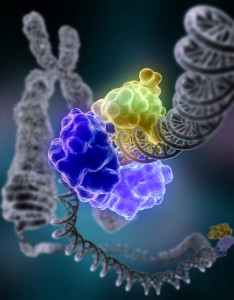 Special proteins are used to locate the damage among billions of nucleotide pairs. These proteins ride along the DNA looking for errors. Up until now there has been no way to understand how these molecules can find one missing link out of billions. This has to be done very rapidly. There is not enough time to examine each strand. The proteins just aren’t fast enough.
Special proteins are used to locate the damage among billions of nucleotide pairs. These proteins ride along the DNA looking for errors. Up until now there has been no way to understand how these molecules can find one missing link out of billions. This has to be done very rapidly. There is not enough time to examine each strand. The proteins just aren’t fast enough.
Now, unique electric properties have been found in DNA that appears to allow the rapid detection of errors. One newly discovered property of DNA is that molecule conducts electricity as a wire. Very recently, this property has been linked to the ability of the cell to find abnormal spots for repair.
DNA’s electrical properties allow protein to produce electrons that travel along the DNA wire.
How Does DNA Conduct Electricity
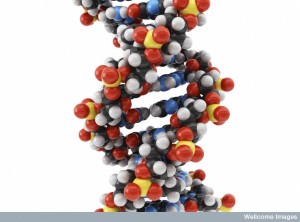 Up until now it has not been clear whether the complex structure of DNA will increase the transmission of electrons or inhibit them. Some think that the side chains of amino acids stop the electron transfer, making DNA an insulator of electricity. Others find the opposite.
Up until now it has not been clear whether the complex structure of DNA will increase the transmission of electrons or inhibit them. Some think that the side chains of amino acids stop the electron transfer, making DNA an insulator of electricity. Others find the opposite.
The backbone of the DNA molecule consists of sugars with phosphate molecules. In the center of the spiral are the nucleotide bases. The nucleotides are complex molecules with aromatic rings that produce unusual electron clouds. An electric current can flow along these electron clouds.
The early research in this field shows that DNA can conduct a current when it is placed between metals. Later, it was shown that live DNA conducts electricity a very long distance—hundreds of nucleotide bases. Proteins on the other hand only produced tiny currents noted in the quantum effects of tunneling, which appear to be related to enzyme mechanisms.
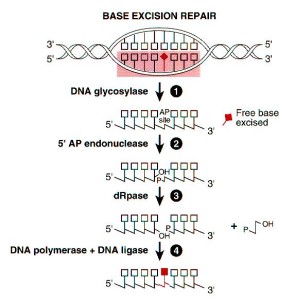 What has been striking about this new DNA research is that the electric current in DNA occurs when all of nucleotides have no errors. In this situation, the arrays of aromatic electron clouds create the currents, which travel for very long distances. If there are mismatches of the nucleotides through errors, such as missing, mismatched, or altered nucleotides, the current is disrupted.
What has been striking about this new DNA research is that the electric current in DNA occurs when all of nucleotides have no errors. In this situation, the arrays of aromatic electron clouds create the currents, which travel for very long distances. If there are mismatches of the nucleotides through errors, such as missing, mismatched, or altered nucleotides, the current is disrupted.
One of the complex enzymes that repairs DNA is endonuclease III, which uses base excision repair (BER) described in a previous post. It identifies the error and cuts out the damaged nucleotides and then calls for other enzymes to insert the correct ones. These large enzymes create complexes together for this work. This enzyme uses a complex of iron and sulfur atoms that are very involved in electron transfer processes. These metals can either take or give an electron known as reduction and oxidation in chemistry.
How Does the Enzyme Find the DNA Errors and Fix Them
 There are a wide variety of proteins that have iron-sulfur complexes, linked in different ways. These metallo-proteins are involved in many energy reactions in the mitochondria and in general metabolism with NADH and nitrogen fixation. In the mitochondrial transport system both Complex I and Complex II have many of these clusters. The clusters are involved in synthesis of lipoic acid. Significantly, these electron transfer clusters are found in many of the most significant enzymes regulating genes.
There are a wide variety of proteins that have iron-sulfur complexes, linked in different ways. These metallo-proteins are involved in many energy reactions in the mitochondria and in general metabolism with NADH and nitrogen fixation. In the mitochondrial transport system both Complex I and Complex II have many of these clusters. The clusters are involved in synthesis of lipoic acid. Significantly, these electron transfer clusters are found in many of the most significant enzymes regulating genes.
Iron and sulfur in enzymes are, often, used to help folding or altering the shape of the molecule. But, in Endonulcease III, the metals are very close to the DNA wire.

From DMacks
Endonucleases are a type of enzyme that cuts the phosphor-diester bond—the backbone of DNA—in a strand of DNA or RNA. Type I cuts the DNA bond randomly. There are many other specific versions called “restriction enzymes” that cut only at very specific sequences. Type III has been studied the most for its relation to electric DNA and cuts very specifically.
When connected to DNA, Endonuclease III changes its shape allowing the iron and sulfur atoms to give up electrons increasing its charge. This shape alteration makes the enzyme increase its hold on the DNA. The released electron travels along the DNA wire until it meets another Endonuclease III molecule attached to the DNA. The second Endonuclease III molecule takes up the electron from the DNA. Taking up this electron, the second enzyme loosens its grip on the DNA.
As the electron travels along the DNA wire, it is stopped if there is a damaged spot, thus identifying a problem. When the error is identified, both of the repair molecules stay attached to the DNA wire on either side of the error, identifying a trouble spot. In fact, Endonuclease III does more. It helps communicate with other proteins, such as MutY, that come and fix the mutation.
This mechanism of exchanging electrons has now been shown to be extremely important in many techniques for repairing DNA. It, also, occurs occurs with many other repair proteins.
Many Major Genetic Enzymes Have Iron-Sulfur Electric Clusters
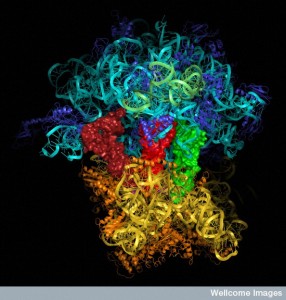 Many of the major enzymes that work with DNA have the iron sulfur clusters.. One important enzyme is polymerase that copies the DNA, as well as primase that helps the polymerase. Another is helicase that unwinds DNA from the histone spools. Although the research is just beginning in these enzymes, all of them appear to engage in similar electric mechanisms.
Many of the major enzymes that work with DNA have the iron sulfur clusters.. One important enzyme is polymerase that copies the DNA, as well as primase that helps the polymerase. Another is helicase that unwinds DNA from the histone spools. Although the research is just beginning in these enzymes, all of them appear to engage in similar electric mechanisms.
Polymerase: The major enzymes that have been first identified to have these electrical properties are polymerases. These enzymes synthesize chains of nucleic acids assembling DNA and RNA molecules. They copy DNA and RNA templates using base pairing. Polymerase is the general term for enzymes that make larger molecules. The polymerase molecule that takes amino acids and makes them into long strands of protein is not called “polymerase” but rather the ribsome. The electric mechanisms of the ribosome need to be elucidated.
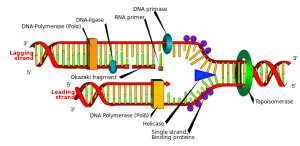 Primase: The primase enzyme is involved in copying DNA. It creates an RNA primer (in some organisms a DNA primer), which is used temporarily and then later removed by exonucleases. The RNA primer strand is then used to make copies of the single strand of DNA. This is a critical process because there is no known way that DNA is copied without the primer of either an RNA or DNA strand. (The DNA plus the primer is called DNA elongation). These enzymes work together. First an RNA strand made by primase then polymerase elongates it. Then a complex is created with two primase units, called the polymerase primase complex. Another primosome complex in bacteria includes primase and a helicase. A helicase stimulates a primase making a small RNA primer and then polymerase adds more nucleotides.
Primase: The primase enzyme is involved in copying DNA. It creates an RNA primer (in some organisms a DNA primer), which is used temporarily and then later removed by exonucleases. The RNA primer strand is then used to make copies of the single strand of DNA. This is a critical process because there is no known way that DNA is copied without the primer of either an RNA or DNA strand. (The DNA plus the primer is called DNA elongation). These enzymes work together. First an RNA strand made by primase then polymerase elongates it. Then a complex is created with two primase units, called the polymerase primase complex. Another primosome complex in bacteria includes primase and a helicase. A helicase stimulates a primase making a small RNA primer and then polymerase adds more nucleotides.
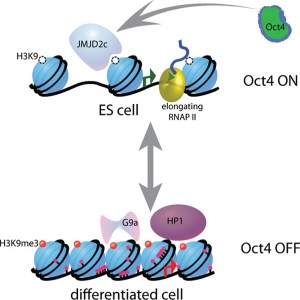
Helicases: These critical enzymes un-package the spooled genes from the histones They move along the backbone of the DNA in one direction separating two strands that are interlocked. These can be two strands of DNA, of RNA, or a combination of one strand of each. The mechanism uses energy from ATP. There are many different helicases that are used to separate genetic strands.
All of these have electrical iron-sulfur clusters and appear to have electrical mechanisms.
DNA, Cells and Electricity
Another surprising finding related to electricity in DNA is that the seven genes required to create the iron-sulfur clusters, have been stable in cells and molecules for billions of years. Also, 600 million years ago, long before neurons developed, an organism that later became jellyfish and sea anemones developed the genes for electrical communication. This means that electrical properties of genes started long before axons, electrical synapses and brain waves. They are basic to the cell, like DNA.
Another finding is that several cancers occur when the MutY enzyme is mutated and don’t have the metal clusters. Without the clusters, they can’t transfer the charges, and therefore more cancer causing damage can occur.
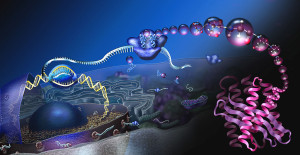 Once considered simple, the way that DNA is utilized to make messenger RNA is now known to be extremely complex with many layers of epigenetic mechanisms. There are many different triggers that unspool the complex histone that protect the DNA. Once open, many different proteins and RNAs trigger the activity that defines what parts of the genes will be utilized. There is an immense coordination at many levels that occurs during the production of the messenger RNAs, alternative RNA editing and production of proteins at the ribosome. Are the electric properties of DNA part of these larger processes? Also, social responses of the organism trigger these same genetic mechanisms. Could these coordinated electrical properties at many different orders of magnitude be related to an electromagnetic mind?
Once considered simple, the way that DNA is utilized to make messenger RNA is now known to be extremely complex with many layers of epigenetic mechanisms. There are many different triggers that unspool the complex histone that protect the DNA. Once open, many different proteins and RNAs trigger the activity that defines what parts of the genes will be utilized. There is an immense coordination at many levels that occurs during the production of the messenger RNAs, alternative RNA editing and production of proteins at the ribosome. Are the electric properties of DNA part of these larger processes? Also, social responses of the organism trigger these same genetic mechanisms. Could these coordinated electrical properties at many different orders of magnitude be related to an electromagnetic mind?
Electrical DNA Properties, Melanin and Skin Cancer
 Recently, another unrelated electrical DNA finding was discovered. It remains to be incorporated into a more general theory of electric DNA. This other electrical property of DNA was found in studies about ultraviolet light causing cancers mutations in DNA in skin cells.
Recently, another unrelated electrical DNA finding was discovered. It remains to be incorporated into a more general theory of electric DNA. This other electrical property of DNA was found in studies about ultraviolet light causing cancers mutations in DNA in skin cells.
A recent with melanin shows intriguing connections with electron transfer and its effect on metabolism and DNA. Ultraviolet light induces reactive oxygen and nitrogen species molecules, which excite electrons in melanin fragments. While in the dark hours later after sun exposure, the electrical energy is transferred to DNA and damages it causing cancerous mutations. What is unusual about this is that the skin damage from ultraviolet light that damages DNA and triggers cancer, occurs by this mechanism while in the dark.
Induced by ultraviolet light, an electron is excited in melanin fragments and this electron is transferred to DNA. The transfer of this electron to DNA in the dark causes the same mutations as the ultraviolet light. This occurs by a special quantum state transferring energy of a photon from ultraviolet light to an electron in DNA.
Electric DNA and Mind
One theory of mind in nature is electromagnetic fields and gradients interacting with molecules, cells, organs and creatures. Mental events clearly are correlated with different brain waves, electrical communication along axon wires, electrical brain synapses and properties of electrical gradients. The details are elaborated in previous posts.
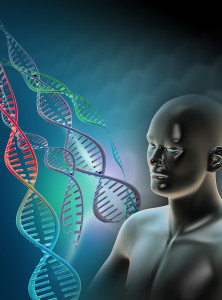 Recent research shows dramatic electrical effects of DNA and the complex enzymes that regulate DNA’s behavior. Many of these enzymes have clusters of iron-sulfur molecules that are critical in many of life’s electron energy transfers. DNA itself is noted to serve as a conducting wire of electricity when in between two metalloprotein molecules. But, it is certainly possible that there are other unknown electric properties of DNA with its very complex regulating machinery. All of the genetic editing (such as alternative RNA splicing) and cellular genetic engineering (such as making antibodies) could be conducted through electrical mechanisms.
Recent research shows dramatic electrical effects of DNA and the complex enzymes that regulate DNA’s behavior. Many of these enzymes have clusters of iron-sulfur molecules that are critical in many of life’s electron energy transfers. DNA itself is noted to serve as a conducting wire of electricity when in between two metalloprotein molecules. But, it is certainly possible that there are other unknown electric properties of DNA with its very complex regulating machinery. All of the genetic editing (such as alternative RNA splicing) and cellular genetic engineering (such as making antibodies) could be conducted through electrical mechanisms.
The very unusual effects of mind triggering specific genetic networks have, also, been elaborated in previous posts. Now, more of the very specific complexes that control DNA appear to have electric properties. DNA electrical mechanisms could be a way that an electromagnetic mind relates directly to the functions of the cell.